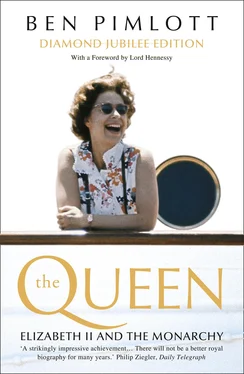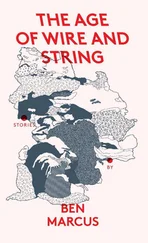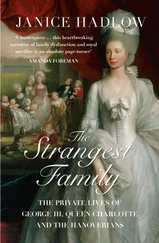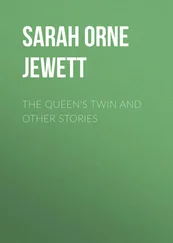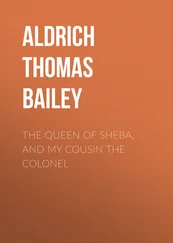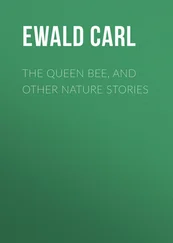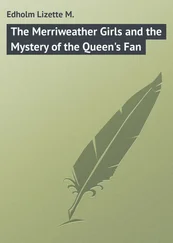‘Thank you so very much for the books you and Mr Chamberlain sent me for my birthday,’ Princess Elizabeth wrote to the Prime Minister’s wife on 23 April 1940. ‘It was so kind of you and I have always wanted to read them. I hope you are both well and that Mr Chamberlain is not too tired. Thanking you again so much.’ 5Mr Chamberlain was, however, shortly to be relieved of his responsibilities. On 8 May , following the debate on the Norway campaign, he was forced to resign. Two days later, Winston Churchill drove to Buckingham Palace to kiss hands as his successor. On 12 May, as Hitler invaded the Low Countries, the princesses were moved into the great fortress of Windsor Castle, where they were to live for most of the war. ‘We went there for a weekend,’ as Princess Margaret recalls, ‘and we stayed for five years.’ 6
For a while, they slept in the dungeons. Princess Margaret remembers having to run to get to the shelter under Brunswick Tower. Yet she thought of it as a happy time. 7Her sister felt much the same. She later told Harold Nicolson that she would like to make Windsor her home, rather than Buckingham Palace or Sandringham, since all the happiest memories of her childhood were associated with the Castle and the Park. 8The girls lived in pampered seclusion, in conditions, as Morrah put it after the war, ‘favourable to the quiet business of the schoolroom, though perhaps less for the enlargement of human contacts.’ 9There was a shifting band of soldiers, often Grenadier Guards, for company. With an informality hard to imagine in peacetime, they ate with their governesses and one or two officers in the State Dining Room, where a single light bulb hung from the ceiling in place of a chandelier. 10At first, the King and Queen stayed at Windsor, commuting to Buckingham Palace. Later, after the worst of the bombing, they returned to London, visiting the Castle only at weekends. 11
How should the royal children be used in wartime? Some of the best minds in the Ministry of Information addressed the problem with, as usual, contradictory results. On the one hand, it was decided to make much of the princesses’ privations at a ‘place in the country,’ where they bore their loneliness stoically, for the national good. On the other, government propaganda used them as the centre-piece to a tableau of the perfect family hearth, confidently and comfortably immune to the threats of vulgar dictators. To project such an image, they would be shown, in pictures or prose, relaxing on sofas and rugs, surrounded by proud parents and placid pets. These two, separate, ways of imagining the King’s daughters were sometimes combined. Later in the war, when victory was in sight, the second tended to predominate. Initially, when the need for sacrifice was greatest, the emphasis was on the first.
The presentation of the girls as victims of the family-rending impact of war provided the theme of Princess Elizabeth’s first broadcast, delivered in October 1940 when she was fourteen-and-a-half, and directed at British children evacuated to North America, though actually intended to influence adult opinion in the United States, and the US Government, as well.
That the broadcast took place at all was a retreat by Buckingham Palace and a sign of how dire the emergency had become. Pre-war requests for Princess Elizabeth to speak on the air had been met by curt refusals. In 1938, the influential owner of the New York Herald Tribune , Helen Reid, was brusquely rebuffed when she asked if the Princess might make a five-minute broadcast to open National Children’s Week in the United States. Mrs Reid had used the powerful argument that such a gesture would be in keeping with the British Government’s policy of doing everything possible to bring America and Great Britain together. She had added, a little less tactfully, that it would also assuage American bitterness over the treatment of the Duke of Windsor at the time of his marriage. 12Referring the matter to Buckingham Palace, the British ambassador wrote dismissively of such ‘attempts to enlist the princesses for stunts’. 13The Palace strongly agreed, and confirmed ‘that there is, of course, no question of the princesses broadcasting, nor is it likely to be considered for many years to come’. 14The autumn of 1940, however, was no time to be fastidious, where a chance of influencing American public opinion was concerned. When the Director-General of the BBC, Frederick Ogilvie, approached the King’s private secretary, he immediately received a favourable answer.
The plan was to get Princess Elizabeth to introduce a series of ‘Children in Wartime’ programmes, intended to bring out the part children could play in the nation’s defence. The Princess’s brief statement would go out live in the short-wave service to the United States and Canada, and later be heard in recorded form all over the world. The unofficial aim of pulling adult heartstrings was made clear to the King and Queen. ‘As Her Royal Highness’s first broadcast, delivered at an historic moment,’ Ogilvie explained to the Palace, ‘it would reach the minds of the millions who heard it with a singular poignancy.’ 15
The broadcast went out on 13 October. The Princess read a carefully scripted text which linked her own recent life and that of her sister to the lives of displaced British children overseas. ‘Thousands of you in this country have had to leave your homes and be separated from your father and mother,’ she told her listeners, in a high-pitched, precise voice which The Times likened to that of her mother. 16‘My sister Margaret Rose and I feel so much for you, as we know from experience what it means to be away from those we love most of all.’ There was an expression of optimism (‘We know, every one of us, that in the end all will be well.’) A final exchange with the ten-year-old Princess Margaret was also in the prepared text: ‘My sister is by my side, and we are both going to say good night to you. Come on, Margaret.’ ‘Good night,’ said a smaller voice. ‘Good night and good luck to you all.’ 17
Jock Colville, private secretary to the Prime Minister and later to Princess Elizabeth, wrote in his diary that he and Diana Sandys, Winston Churchill’s daughter, who listened to the broadcast with him, ‘were embarrassed by the sloppy sentiment she was made to express, but her voice was most impressive and, if the Monarchy survives, Queen Elizabeth II should be a most successful radio Queen’. 18Sloppiness was what the occasion seemed to require: the broadcast was hailed on both sides of the Atlantic as a propaganda triumph, at a time when triumphs of any kind were sparse. It attracted particularly wide attention in the United States and made the front pages, with a picture in all the New York papers. ‘Princess yesterday huge success here,’ the local BBC representative cabled to Ogilvie. ‘Some stations report telephone exchanges jammed with requests for repeat.’ 19Such was the quantity and enthusiasm of fan mail that the BBC turned the broadcast into a gramophone record for sale in America and throughout the Empire.
The guise of the princesses as typically lonely displaced children reinforced another part of the Ministry of Information’s offensive: a projection of the King and Queen as typical Londoners carrying on regardless in spite of the Blitz. It helped to give the broadcast impact, indeed it might almost have been part of the plot, that Buckingham Palace had received a direct hit a few weeks earlier. Pictures of brave little girls in the country and their brave parents among the rubble mixed together in the public imagination. Mass Observation, the precursor of in-depth polling, recorded a mood of indignation and defiance, in which royalty played a part. ‘If they hurt the King and Queen or the princesses we’d be so mad we’d blast every German out of existence,’ declared a supposedly typical female clerk. 20
Читать дальше
